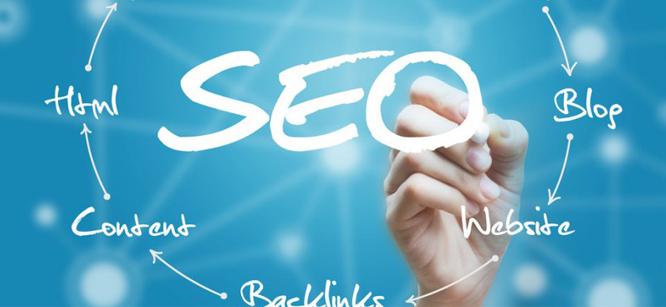Web Blog
Best On-Page Optimization Techniques
SEO has several factors to be considered. Getting a higher rank from search engines requires a lot of effort. The On-Page and Off page optimization completes the SEO process. The following are some of the best On-Page Optimization Techniques:

Page Title:
The title is the face of the content and has to be set carefully. A catchy title can draw attention of the web users, leading to a visit to your site. You must ensure that the title is not deviated from the rest of the content. For example: If your content is talking about communication skills, include this keyword in your title as well. This will help the user to get an idea about your content and will also fulfill the SEO factors. The characters in the title must be limited to 70. Avoid using any special characters in your title.
Meta Descriptions:
This is a brief introduction about your entire content. The web users would want a gist of your write-up before spending their time on your website. For example: “Communication is the essence of any relationship, be it personal or professional. Help us to hone your communication skills.” Thus, it gives a clear picture to the readers about the context of your article. Remember, the total characters should be within 160. Do not forget to add your keyword.
Meta Tags:
The meta tags or keywords forms the base of your rankings. Add all the relevant keywords as meta tags. Whenever a user searches for any of the keywords that you have mentioned, there are chances for your site to be displayed. You can also use wordpress plug-in ‘All In One SEO Pack’ as it will allows you to add all the meta tags at the bottom of your page or posts before going live. The keywords can be unlimited, but it is advisable to use around 5-10 relevant keywords for a content of 1000 words.
URL Structure:
You would have come across URLs which are too lengthy and complicated. Such links are too difficult to recollect by the users. The dynamic URLs can be changed whereas the static ones remain the same. Google prefers static URLs as they can be easily crawled and are easy to understand by the users. A good URL should be within the limit of 255 characters. Do not forget to add keywords to your URLs which are relevant to your posts. Use hyphen to separate the different sections of the link.
Body Tags:
Imagine reading an article without any breaks, irritating right? Even essays are split into paragraphs these days for the ease of the users. Break your write up into small paragraphs and use tags to define them. Use the Header tag for the main page title, followed by H2, H3 tags and so on. H1, H2 and H3 tags are given weightage by the search engines. These tags will help the search engine to prioritize what is important for your content. Use bold, italics and underline wherever necessary. This will differentiate the content and make it more organized and appealing. Don’t forget to add keywords in your headlines.
Keyword Density:
I agree, keywords are important for SEO purpose, but that doesn’t permit you to stuff it in the entire content. The maximum keyword density should be between 2-5%. Excessive usage or repetitive keywords can ban your website. You can use synonyms if you are keyword centric. This will serve your purpose as well as fetch you results without getting Spammed. The keyword density checker tool can help you to find out the keyword weightage. Do use it before publishing your content.
ALT Tag:
Ever wondered about the images that are displayed in the websites? The images are only for the benefits of users as Google cannot read images. Use Alt tag whenever you use an image. All the uploaded images must be given titles. Add description to your images and it is better if you add the keyword while saving your file. Avoid saving as image1 or image 2. This will add to your SEO factor. The image should also be of high quality.
Internal Linking:
Before being completely dependent on backlinks, do think about internal linking. The internal links are also important. Remember charity begins at home. When a user visits your site, allow him to visit other pages as well. Use anchor text to link the other pages of your site. This will help to improve the Google page rank apart from engaging users for a longer time on your site. It will also allow the search engines to know about the existence of your other pages. Add internal links wherever it is meaningful. 3-5 internal links in a page will serve the purpose.
Speed:
The users will soon switch to new websites if your loading time is higher. The Internet has the power to throw info in a fraction of second. Waiting for few minutes would mean losing customers. None of us would like to wait for the information to be displayed. Speed is one of the ranking factors. The loading speed of 2-5 seconds is considered excellent. Do check the speed of all your pages.
These are the best On-Page Optimization Techniques that can assist you in getting results. Do share your feedback with us or let us know if we can answer your queries.
